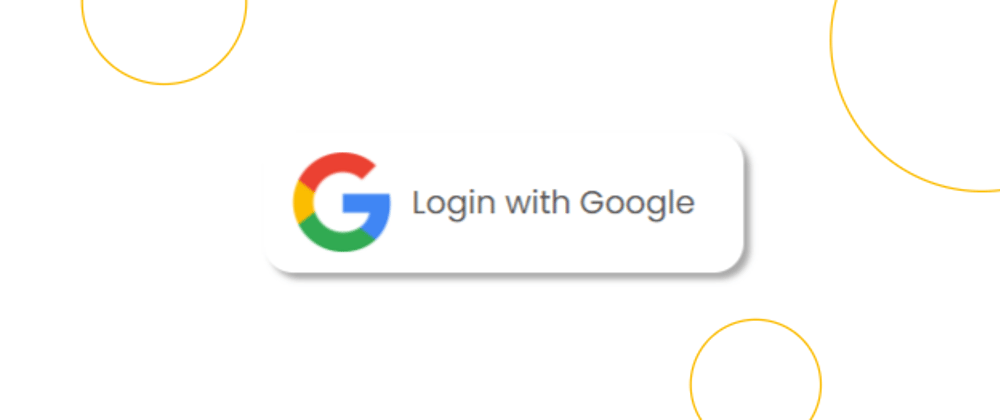Social authentication has one big advantage - you don't have to worry about user data, all the backend work is done for you! And almost everyone these days has a Google account so it would be really handy for your users to have this option!😊
So let's begin!
Step 1
First thing first you need to get your Google credentials details - Client ID and Client Secret. Go to Google Developers website and in the Credentials click on 'Create credentials. Select 'OAuth client ID'. 👇

You may have to create OAuth Consent Screen. Just enter your Flask app name and your email address in the user support & developer email and click 'Save and continue'.
After that go back to credentials tab and edit your OAuth Client ID. Add new authorized URI to redirect your logins through:

And we're done! Now let's create our app!
Step 2
Run the following in your command line:
pip install -U Flask Authlib requests
Create new folder for your app and open it in your favorite IDE:
mkdir flask-google-login
cd flask-google-login
code .
Step 3
In your project directory create new folder templates and in this folder createindex.html:
<!DOCTYPE html>
<html lang="en">
<head>
<meta charset="UTF-8">
<meta name="viewport" content="width=device-width, initial-scale=1.0">
<link rel="preconnect" href="https://fonts.googleapis.com">
<link rel="preconnect" href="https://fonts.gstatic.com" crossorigin>
<link href="https://fonts.googleapis.com/css2?family=Poppins&display=swap" rel="stylesheet">
<link rel= "stylesheet" type= "text/css" href= "{{ url_for('static',filename='styles.css') }}">
<title>Flask app</title>
</head>
<body>
<div align="center">
<a href="google/" class="login-btn" style="text-decoration:none;">
<img id="google" src="https://upload.wikimedia.org/wikipedia/commons/thumb/5/53/Google_%22G%22_Logo.svg/2048px-Google_%22G%22_Logo.svg.png"
alt="Google"
style="width:50px;height:50px;">
<div class="btn-text">
Login with Google
</div>
</a>
</div>
</body>
</html>
Also in the working directory create another folder static and add styles.css file:
.login-btn {
justify-content: center;
flex-direction: row;
display: flex;
background-color: rgb(255, 255, 255);
justify-content: center;
align-items: center;
width: 220px;
padding: 10px;
box-shadow: 3px 3px 3px rgb(170, 170, 170);
border-radius: 15px;
}
.btn-text {
justify-content: center;
padding: 10px;
font-family: 'Poppins', sans-serif;
color: rgb(85, 85, 85);
}
Step 4
In the main working directory create app.py file:
from flask import Flask, render_template, url_for, redirect
from authlib.integrations.flask_client import OAuth
import os
app = Flask(__name__)
app.secret_key = os.urandom(12)
oauth = OAuth(app)
@app.route('/')
def index():
return render_template('index.html')
To be able to authorize our users we need to create an unique secret key. to do that we simply use 12 randomly generated characters.
After that we will create the index function that will render our index.html page.
Step 5
Then we will create two functions that will handle authentication with Google. To get your Google Client ID and Secret go to Google Credentials click on the download icon and cope your credentials!
@app.route('/google/')
def google():
GOOGLE_CLIENT_ID = 'YOUR GOOGLE CLIENT ID'
GOOGLE_CLIENT_SECRET = 'YOUR GOOGLE CLIENT SECRET'
CONF_URL = 'https://accounts.google.com/.well-known/openid-configuration'
oauth.register(
name='google',
client_id=GOOGLE_CLIENT_ID,
client_secret=GOOGLE_CLIENT_SECRET,
server_metadata_url=CONF_URL,
client_kwargs={
'scope': 'openid email profile'
}
)
# Redirect to google_auth function
redirect_uri = url_for('google_auth', _external=True)
print(redirect_uri)
return oauth.google.authorize_redirect(redirect_uri)
@app.route('/google/auth/')
def google_auth():
token = oauth.google.authorize_access_token()
user = oauth.google.parse_id_token(token)
print(" Google User ", user)
return redirect('/')
After all this run your app and go to http://localhost:5000/ and you should be able to see something like this:

After clicking on the button you will be redirected to the Google Login page:

That's it! Hope you liked it and happy coding!😀








Top comments (3)
Nice! Little addition though. Google now requires a nonce and it helps to store the user in a session var so you can later reference it.
Step 4 add the import for generate_token and session
Modify Step 5 def google()
Thank you! Helpful update/tip. Worked for me when I was receiving an error message of missing parameter 'nonce' if I recall correctly.
Great article! Does the ‘user’ variable the way you have coded it retrieve the name and email of the signed in user?